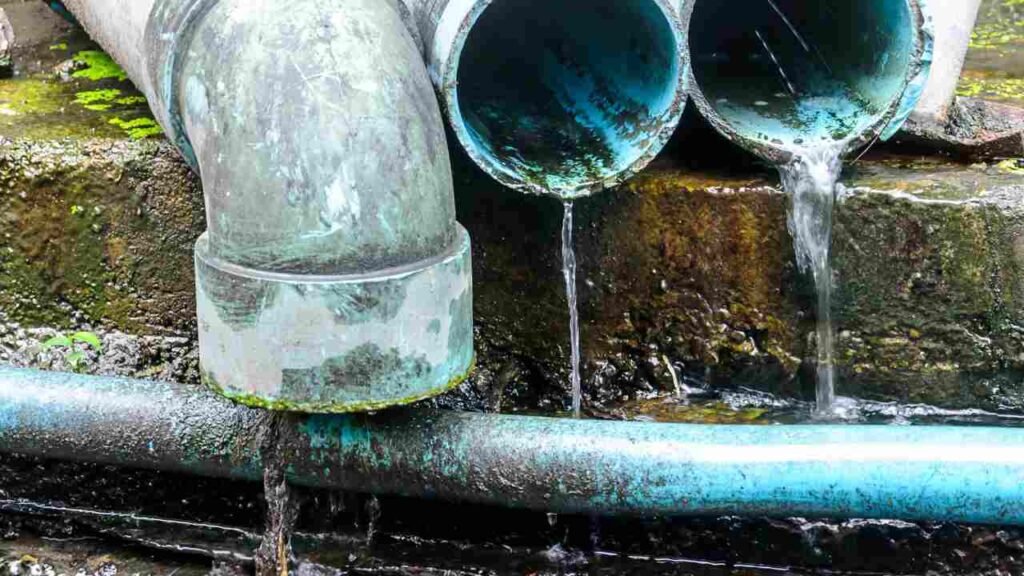
Hey there! If you’ve ever dealt with clogged drains or foul odors emanating from your plumbing, you know how frustrating it can be. But fear not, my DIY-savvy friends, because today we’re diving into the nitty-gritty of keeping your PVC pipes squeaky clean from the inside. I know what you might be thinking: “Cleaning the inside of pipes?
Isn’t that a job for professionals?” Well, think again! With a few handy tools and a little know-how, you can tackle this task like a seasoned pro. So, roll up your sleeves, put on those gloves, and get ready to learn the ins and outs of maintaining pristine PVC pipes. Trust me; your pipes will thank you!
Importance of Clean PVC Pipes:
Clean PVC pipes are the unsung heroes of our plumbing systems, quietly working behind the scenes to keep things flowing smoothly. Understanding the importance of maintaining clean PVC pipes is crucial for avoiding a slew of plumbing headaches. Picture this: clogged drains, sluggish water flow, and unpleasant odors infiltrating your home. Not exactly the stuff dreams are made of, right?
By keeping your PVC pipes clean, you can prevent these nightmares from becoming a reality. Over time, debris, residue, and buildup can accumulate within the pipes, leading to clogs, leaks, and reduced water pressure. But fear not! By adopting a proactive approach to cleaning, you can ensure your pipes remain in tip-top shape, saving yourself time, money, and potential plumbing disasters.
So, let’s delve deeper into the importance of clean PVC pipes and discover why they deserve a little TLC.
Essential Tools and Materials:
Now that we understand the significance of clean PVC pipes, it’s time to gather the necessary tools and materials for this pipe-cleaning adventure. But don’t worry; you won’t need a toolbox the size of a small shed for this task. The items you’ll need are relatively simple and readily available. Let’s run through the checklist together.
First and foremost, let’s prioritize safety. Put on a pair of protective gloves to shield your hands from any potential irritants or sharp edges. Trust me; it’s better to be safe than sorry!
Next, grab a pair of safety glasses to shield your eyes. It may seem like an extra step, but a little eye protection can go a long way when working with pipes.
Now, onto the cleaning supplies. You’ll need a long-handled or pipe brush specifically designed for this purpose. These brushes come in various sizes, so choose one that matches the diameter of your PVC pipes.
You’ll need a mild cleaning solution to tackle the dirt and grime within the pipes. Vinegar is popular due to its natural cleaning properties, but you can also opt for a mild detergent or a specialized pipe-cleaning solution. Just read the labels and follow the instructions for safe and effective use.
Remember to have a bucket or basin handy for collecting any water or debris that may come out during the cleaning process. It’ll make cleanup a breeze!
Lastly, you’ll need a water source to rinse the pipes. This can be as simple as a hose or a nearby faucet. Easy peasy, right?
Preparing for the Cleaning Process:
Before diving headfirst into cleaning those PVC pipes, it’s essential to prepare adequately for the task. Taking a few moments to set the stage will ensure a smoother and more efficient cleaning process. So, let’s roll up our sleeves and get ready!
First, it’s crucial to turn off the water supply to the area where the PVC pipes are located. This step will prevent accidental water flow or splashes during cleaning. Better safe than soggy!
Next, take a moment to clear the surrounding area around the pipes. Remove any objects or obstacles that might hinder your access or make maneuvering difficult. Creating a clutter-free workspace will allow you to move around comfortably and reach all areas of the pipes.
Now, let’s prioritize safety. As mentioned earlier, we recommend wearing protective gloves to shield your hands from any potential irritants or sharp edges. Additionally, consider wearing long sleeves and pants to protect your skin during the cleaning process further.
Once you’ve geared up, take a moment to inspect the pipes visually. Look for any visible signs of damage, such as cracks, leaks, or loose fittings. If you notice any issues, it’s best to address them before cleaning. If everything looks good, you’re ready for the next step!
Cleaning Techniques for PVC Pipes:
Now that we’ve laid the groundwork, it’s time to dive into the cleaning techniques to help you achieve those squeaky-clean PVC pipes. With a few effective methods, you’ll be well-equipped to tackle the task confidently. So, let’s roll up our sleeves and get cleaning!
1. Flushing with water:
Flushing out loose debris and dirt is an excellent starting point for cleaning PVC pipes. To do this, open all faucets connected to the pipes and turn on the water supply. Allow a steady stream of water to flow through the pipes, effectively dislodging loose particles. This process helps remove the initial buildup layer and prepares the pipes for a deeper clean.
2. Using a brush and mild cleaning solution:
It’s time to bring out the long-handled brush and mild cleaning solution for a more thorough cleaning. Create a mixture of vinegar and water, or use a mild detergent for pipe cleaning. Dip the brush into the solution and gently scrub the inside of the PVC pipes. Pay extra attention to hard-to-reach areas and any spots with visible buildup. Remember to be gentle to avoid damaging the pipes.
3. Pro tip:
If you encounter stubborn stains or deposits, let the cleaning solution sit in the pipes for a while before scrubbing. This allows the solution to break down the buildup, making removing it easier.
4. Rinse, rinse, rinse:
Once you’ve thoroughly scrubbed the pipes, it’s time to rinse away any residue or remaining cleaning solution. Use clean water to flush out the pipes, ensuring all traces of the cleaning solution are washed away. Continue rinsing until the water runs clear, indicating a successful clean.
5. Inspect and repeat if necessary:
After the initial cleaning, take a moment to inspect the pipes for any remaining dirt or buildup. Feel free to repeat the cleaning process if you notice any lingering issues. It’s better to invest more time and effort now than to face potential clogs or reduced water flow later.
Rinsing and Finalizing the Cleaning Process:
Now that you’ve put in the effort to clean those PVC pipes, it’s time to give them a final rinse and put the finishing touches on the cleaning process. This step ensures that any remaining residue or cleaning solution is completely flushed out, leaving you with pipes that are as clean as can be. Let’s wrap it up!
1. Thoroughly rinse the pipes:
Grab your trusty water source, whether a hose or a nearby faucet and begin rinsing. Run clean water through the PVC pipes, allowing it to flow freely and effectively rinse away any lingering residue. Pay attention to all areas of the pipes, ensuring that water reaches every nook and cranny.
2. Check for remaining dirt or buildup:
Take a moment to inspect the pipes visually. Look for any signs of remaining dirt, stains, or buildup. If you notice any areas needing attention, consider repeating the cleaning process in those specific spots. It’s essential to be thorough to achieve the best results.
3. Test the water flow:
With the cleaning process complete, it’s time to reconnect the water supply and test the water flow. Turn on the faucets connected to the PVC pipes and observe the water flow. If everything appears to be flowing smoothly without any disruptions, congratulations! You’ve successfully cleaned the PVC pipes from the inside.
Maintenance Tips for PVC Pipes:
Congratulations on successfully cleaning your PVC pipes! Now that they’re sparkling clean, it’s important to implement some maintenance tips to keep them that way. Regular upkeep will ensure the longevity and optimal performance of your PVC pipes. Let’s explore some maintenance tips to help you maintain those pristine pipes:
1. Regular inspections:
Make it a habit to inspect your PVC pipes periodically visually. Look for any signs of leaks, cracks, or damage. Catching and addressing potential issues early can prevent them from escalating into costly repairs later.
2. Avoid harsh chemicals:
Be mindful of what goes down your drains connected to the PVC pipes. Harsh chemicals can damage the pipes over time. Avoid pouring grease, oil, or chemical cleaners down the drains. Instead, opt for environmentally friendly alternatives and dispose of grease properly.
3. Consider drain traps or filters:
Install them in your sinks and showers to catch debris, hair, and other particles before they enter the PVC pipes. This simple preventive measure can go a long way in preventing clogs and buildup.
4. Maintain proper water pressure:
Excessively high water pressure can strain your PVC pipes, leading to leaks or bursts. Consider installing a pressure regulator to maintain a safe and optimal water pressure level.
5. Insulate exposed pipes:
If you have any exposed PVC pipes in areas prone to extreme temperatures, such as basements or crawl spaces, consider insulating them. Insulation helps protect the pipes from freezing in cold weather and prevents potential cracks or bursts.
6. Address plumbing issues promptly:
If you notice any issues, such as slow drains or unusual odors, address them promptly. Ignoring these signs can lead to further complications and potential damage to your PVC pipes. Call a professional plumber if needed.
Conclusion :
Maintaining clean PVC pipes is essential for a smoothly functioning plumbing system. You can prevent clogs, leaks, and unpleasant odors by understanding the importance of cleanliness, gathering the necessary tools, and employing effective cleaning techniques.
Regular inspections, responsible drain usage, and promptly addressing plumbing issues are key to long-term pipe health. With a little effort and preventive maintenance, you can enjoy the peace of mind of knowing your PVC pipes are in top-notch condition.
